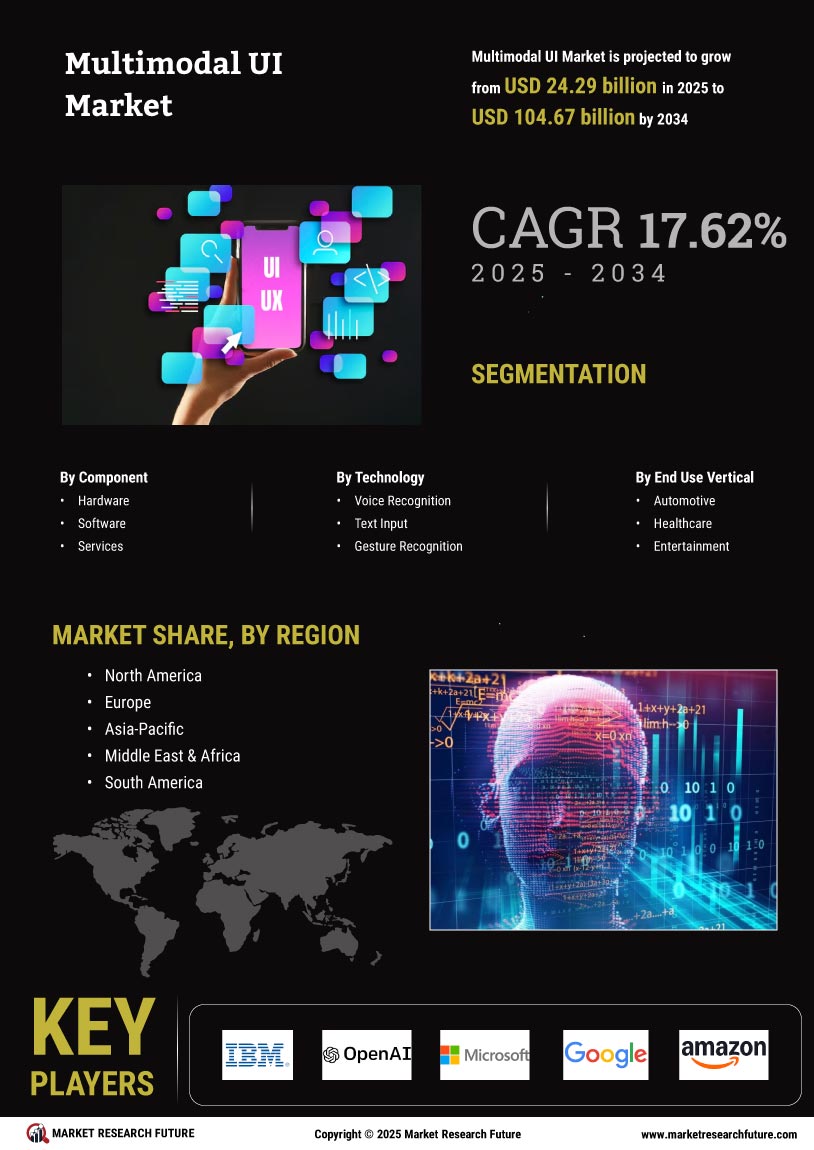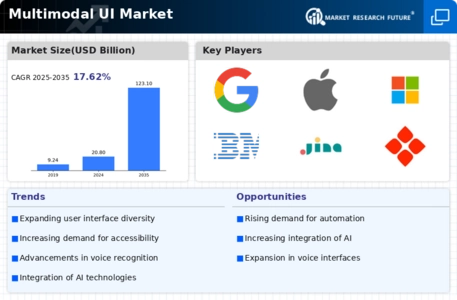Based on Region, the global Multimodal UI is segmented into North America, Europe, Asia-Pacific, Middle East & Africa, and South America. Further, the major countries studied in the market report are the U.S., Canada, Germany, UK, Italy, Spain, China, Japan, India, Australia, UAE, and Brazil.
The North America Multimodal UI market is a growing region. North America has a strong technology infrastructure, including high-speed internet access and extensive smartphone use. This makes it easier to integrate multimodal user interface solutions, which frequently rely on data transfer and processing, as well as mobile device compatibility. Additionally, customers have demonstrated a significant preference for ease and user-friendly interfaces. Multimodal user interfaces, with their natural and intuitive interaction modes such as voice recognition and touch, are well suited to these preferences.
Smart speakers, cellphones, and in-car infotainment systems have all acquired great acceptability among North American customers because to multimodal UI. The regulatory environment in the region has been generally favorable of technology innovation, particularly multimodal UI. To assure the safety and accessibility of these technologies, standards and regulations have been created, providing businesses and consumers confidence in their use. The versatility of multimodal UI extends across multiple industries, from healthcare and automobile to entertainment and smart home gadgets. North American corporations have applied these technology across industries, expanding their market reach.
The Asia Pacific Multimodal UI market is having highest growth rate for global Multimodal UI industry, focused on Wearable technologies such as smartwatches and fitness trackers are becoming increasingly popular throughout Asia Pacific. These gadgets frequently employ multimodal user interfaces that allow users to interact with them via voice, gesture, and touch. Smart home products are also growing more popular in the region, and many of these gadgets feature multimodal user interfaces. In Asia Pacific, the gaming and virtual reality sectors are also expanding rapidly.
These industries are pushing the demand for multimodal user interfaces capable of providing immersive and engaging experiences. Asia Pacific governments are rapidly enacting legislation requiring firms to employ multimodal UIs to improve the safety and security of their products and services. For example, the Indian government has ordered that all new cars sold in the country include ADAS systems with multimodal user interfaces.
FIGURE 3: GLOBAL MULTIMODAL UI MARKET SIZE BY REGION 2022 VS 2032, (USD BILLION)

Source: Secondary Research, Primary Research, MRFR Database, and Analyst Review




















Leave a Comment